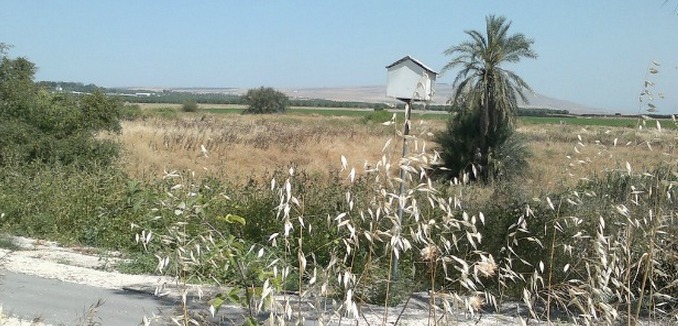The path to peace in the Middle East might be navigated not via a dove carrying an olive branch but by a lowly barn owl.
Barn owls have been used in Israel since 1982 as an alternative to toxic chemicals for killing voles, which at the time plagued Israeli agricultural fields. The preferred chemical against rodents – known as compound 1080 – had been banned a decade earlier in the United States, although not in Israel.
Ornithologist Yossi Leshem thought that owls might be able to control the rodents more naturally.
Leshem set up an experiment at Kibbutz Sde Eliyahu in 1983. Three decades later, the barn owl approach has spread throughout the Palestinian territories and into Jordan as well.
“Birds have the power to bring people together, because they know no boundaries,” says Leshem, who teaches at Tel Aviv University.
That’s in part how 22 participants from 10 governments (including Egypt, Tunisia, Morocco, Cyprus, Greece, France and Switzerland in addition to Israel, the Palestinian Authority and Jordan) came together in January to share research from their barn owl vs. rodent experiences.
The group met at the Crowne Plaza resort hotel on the Jordanian side of the Dead Sea where they discussed scientific findings and hatch plans. Field trips were organized to visit barn owl nesting boxes in the Jordan Valley, as well as to Amman and Petra. A follow-up in March will see some of the Middle Eastern researchers visit California State University in Sacramento, where they will be hosted by conservation biologist Sara Kross.
While the topic was formally owls, regional peace was never far from discussion.
“Scientists should continue their cooperation for the benefit and peace of people in the area,” emphasized Mansour Abu Rashid, who works with Leshem and directs the Amman Center for Peace and Development.
The program could have been limited to just Israel farms. But the owls didn’t stop at the border and the Palestinians and Jordanians hadn’t switched from rodenticides to owls. In 2002, Leshem and Abu Rashid began to collaborate.
There was some resistance at first – the barn owls, which are a striking white in color, are considered a bad omen in some parts of the Middle East. Violence in the past decade also set back the conservation efforts at times, but eventually US and European funds were secured to launch a cross-border project. And most farmers were convinced after seeing the results.
A pair of barn owls can consume between 2,000 and 6,000 small animals per year and fly up to 7 kilometers away from their nesting boxes each night in search of prey. Today, there are thousands of nesting boxes for barn owls in Israel and hundreds elsewhere in the region.
Compound 1080 is still used in some Israeli fields, although it’s down almost 60 percent since the program began.
But it’s the prospect of “owls for peace” that ignites the imagination of non-farmers.
“In a conflict area, a project like this or any project in common can help,” Leshem says. “I know I’m not going to solve the problems of the Middle East, but I can do my small part.”
(via Israel21c)
[Photo: Israel21c]




